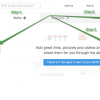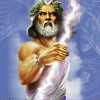Mapping malware, spam on the Web
The growing prevalence of Web sites that can download malicious software onto the computers of unsuspecting visitors has led some to compare the Internet to the lawless Wild West, but a new survey suggests that in law and order terms, the Web looks more like a city with a broad variety of neighborhoods -- some safe, and some less so.
The second annual "Mapping the Mal Web" report was prepared by researchers from Santa Clara, Calif.-based computer security giant McAfee Inc., using data from an analysis of 9.9 million oft-visited sites in 265 different Web domains -- the regions denominated in the last part of the Internet address. Domains are either generic, like .gov or .com, or national, like .ru, for Russia.
The survey says that the .hk, for Hong Kong, domain was the Internet neighborhood with the highest proportion of risky sites, with nearly one in five being rated "red" or "yellow" in a three-part assessment system. "Green" sites are considered safe.








































































